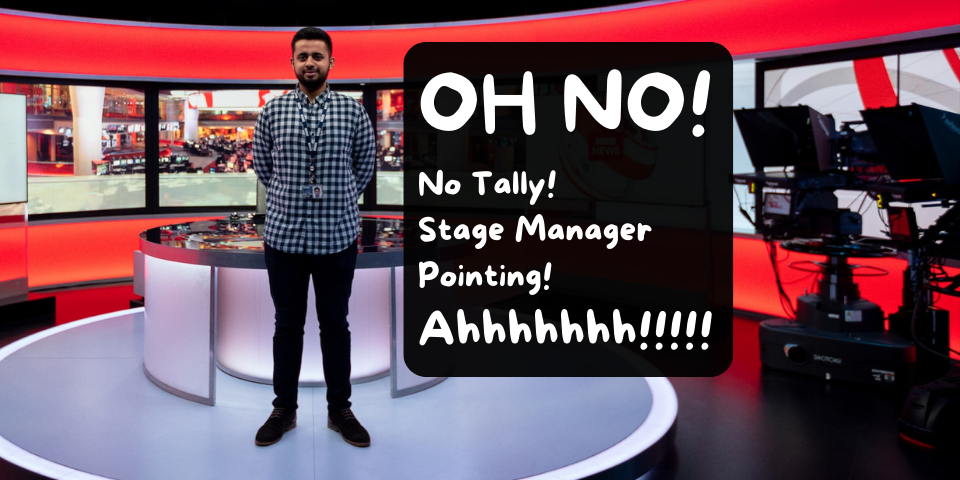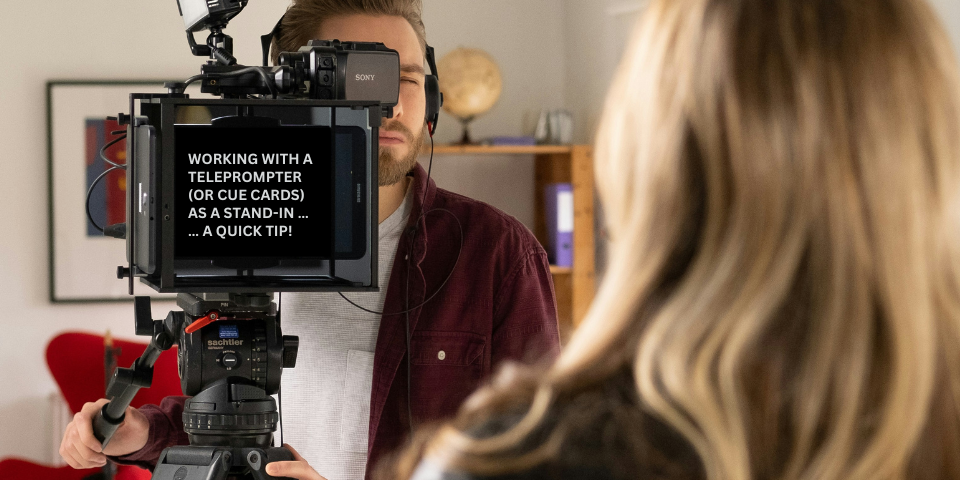Recently, an interesting predicament happened for a stand-in during a rehearsal for a studio-audience television show.
For these types of productions, stand-ins often read from teleprompters or cue cards. The cameras, which frequently are cameras on pedestals or jibs, have small red lights on them called “tallies.” When lit up, they indicate the camera that is live.
Beside such a camera may be a stage manager. That stage manager may be counting down with fingers until the stand-in is supposed to speak. Five, four, three, two, and … then pointing at the lens, indicating to the stand-in to start talking toward that camera. The pointing usually happens right as the tally lights up red.
What’s the predicament?
What to Do When There’s a Conflict between Tally and Stage Manager
A recent issue happened when a stand-in was told to speak toward a certain camera when the tally lit up. However, during one rehearsal, the tally did not light up, but the stage manager had counted down and was pointing toward the camera, indicating for the stand-in to talk.
Given that the red light wasn’t on, the shot was not yet live on the stand-in. So, should the stand-in have waited for the tally to light up red, or start talking because the stage manager had indicated to do so?
There’s No “One Size Fits Every Situation” Answer, But …
Although each situation will ultimately be different, it may help to have a general principle to which to adhere when you’re standing in on a job that has tallies on cameras.
In the event you’re told to talk to a camera when its tally lights up, but also in the event the stage manager is indicating to you to start talking, do what the stage manager says rather than wait for the tally.
After some discussion about the issue, this principle was the solution decided between the stand-in and the stage manager. What ultimately appeared to have happened was someone in the control room did not call the cue that would have lit the tally, but all of the multiple events of the rehearsal were going on, so the stage manager’s eyes and knowledge of the onstage events implied the stage manager was king over the tally in calling what should happen when.
In following this general principle, the responsibility falls not on the stand-in but on the stage manager in the event the stand-in doesn’t start talking when appropriate. This is because the stage manager appears to be running the stage, so any early cues are the fault of the stage manager, not the fault of the stand-in.
Exceptions?
Granted, if the stage manager doesn’t seem to be there and there’s no tally lit up, it may be most appropriate to wait to talk until the tally lights up but not wait for the stage manager to point.
In both instances, the stand-in starts talking either when the tally lights or when the stage manager points, with authority given to the stage manager when present, and authority given to the tally when the stage manager is not present (assuming there is no other direction for the stand-in on when to talk).
Has This Happened to You?
When you are standing in in a dynamic rehearsal with lots of moving parts, it can be stressful for a stand-in. This is because the stand-in may be the focal point of the rehearsal, so many different crew members may be timing their cues and camera work off your actions. A delay in your actions can cause a large rehearsal with many moving parts and a large reset to stop.
Sometimes this is human and understandable, although sometimes it is less understandable. The aim for the stand-in is to follow instructions so the crew can rehearse and “see” the shot, but sometimes there are crisis moments in rehearsal when instructions conflict. Following the stage manager’s instruction is a helpful principle in the event a tally does not light at the time the stage manager points at a camera.
Has a conflict between tally and stage manager happened to you? If so, how did you deal with it? Post your anecdotes in the comments below!







Leave A Comment